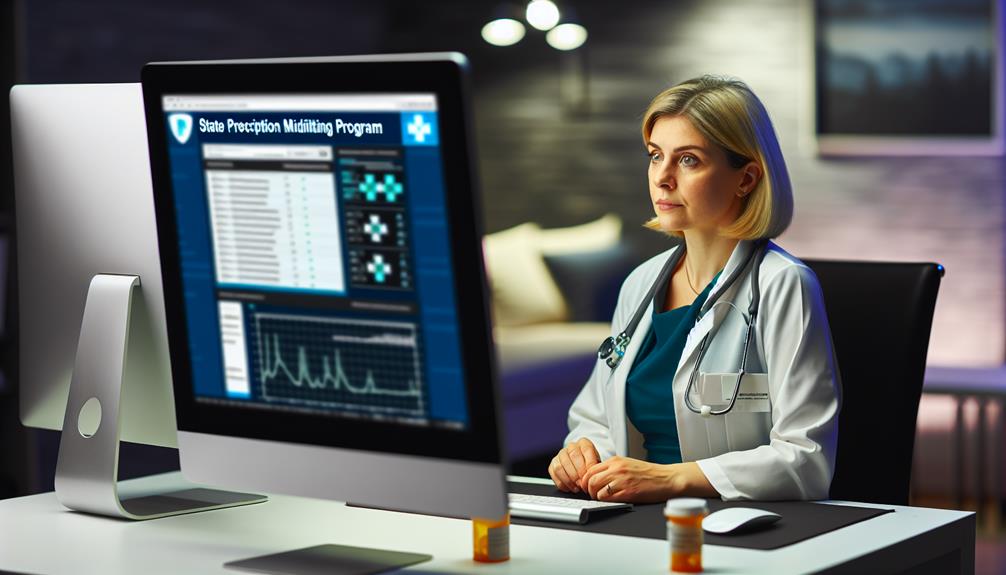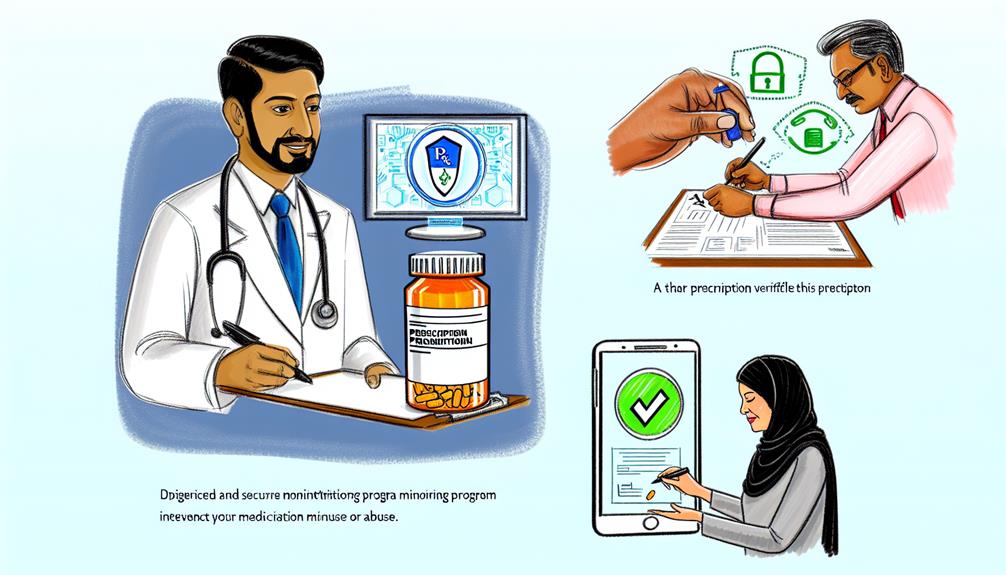Picture this: you walk into a doctor's office, seeking relief from a persistent pain or an ailment that has been bothering you for some time. You trust your healthcare provider to prescribe the appropriate medication to alleviate your discomfort and aid in your recovery.
But have you ever wondered why healthcare providers need prescription drug monitoring programs? Well, let's dive into this topic, as it holds crucial importance for both your safety and the integrity of the healthcare system.
The Role of Prescription Drug Monitoring Programs

Prescription drug monitoring programs play a critical role in enhancing patient safety and preventing substance abuse in healthcare settings. These programs are designed to monitor the prescribing and dispensing of controlled substances, providing healthcare providers with valuable information about a patient's medication history. By having access to this data, healthcare providers can make more informed decisions when prescribing medications, reducing the risk of adverse drug interactions and potential abuse.
One of the key roles of prescription drug monitoring programs is to improve prescribing practices. These programs allow healthcare providers to identify patients who may be at risk for substance abuse or misuse. By reviewing a patient's medication history, providers can identify patterns of overuse or potential addiction, and take appropriate action to address the issue. This might involve adjusting medication dosages, exploring alternative treatment options, or referring the patient to addiction specialists for further evaluation and treatment.
Furthermore, prescription drug monitoring programs also serve as an important tool for healthcare providers to monitor their own prescribing practices. By analyzing data from these programs, providers can assess their own prescribing patterns, identify any potential areas for improvement, and implement strategies to ensure the safe and appropriate use of medications.
Benefits of Implementing Prescription Drug Monitoring Programs
As healthcare providers become more familiar with the role and importance of prescription drug monitoring programs, they can start to recognize the numerous benefits that come with implementing these programs.
Here are some key benefits:
- Improved patient safety: Prescription drug monitoring programs allow healthcare providers to access patient information and identify potential risks of drug misuse or abuse. This helps prevent adverse drug events and ensures patient safety.
- Reduced opioid misuse: With the role of data analysis in prescription drug monitoring programs, healthcare providers can identify patterns of opioid misuse and intervene accordingly. This helps curb the opioid epidemic by preventing overprescribing and detecting early signs of addiction.
- Enhanced patient care: By having access to comprehensive patient medication histories, healthcare providers can make more informed decisions about treatment plans and avoid potential drug interactions. This leads to improved patient care and health outcomes.
- Efficient healthcare practices: Prescription drug monitoring programs streamline the prescribing process by providing real-time data on controlled substance prescriptions. This reduces the need for phone calls or faxes, saving time for both healthcare providers and patients.
Implementing prescription drug monitoring programs not only helps in the fight against the opioid epidemic but also improves patient safety, enhances patient care, and promotes efficient healthcare practices. By leveraging data analysis, healthcare providers can leverage these programs to make more informed decisions and provide optimal care.
Ensuring Patient Safety Through Prescription Drug Monitoring

To ensure patient safety, healthcare providers can utilize prescription drug monitoring programs to access crucial patient information and identify potential risks of drug misuse or abuse. These programs play a critical role in improving prescribing practices and reducing medication errors.
Prescription drug monitoring programs (PDMPs) allow healthcare providers to monitor their patients' prescription drug histories. By accessing this information, healthcare providers can identify any patterns of drug misuse or potential risks associated with certain medications. This knowledge enables them to make more informed decisions when prescribing medications and helps to prevent adverse drug events.
One of the key ways in which PDMPs contribute to patient safety is by improving prescribing practices. Healthcare providers can use the information provided by PDMPs to ensure that they're prescribing the most appropriate medications for their patients. They can identify potential drug interactions, allergies, or other factors that may impact medication selection. This helps to reduce the risk of adverse drug events and ensures that patients receive the most effective and safe treatment.
PDMPs also play a crucial role in reducing medication errors. By accessing a patient's prescription drug history, healthcare providers can identify any duplicate prescriptions or excessive medication use. This helps to prevent medication errors such as accidental overdoses or interactions between medications.
Challenges Faced by Healthcare Providers in Prescription Drug Monitoring
Healthcare providers encounter various challenges when it comes to implementing and utilizing prescription drug monitoring programs. These challenges are primarily related to the prescription drug monitoring regulations and the task of tracking controlled substances. Here are some of the challenges faced by healthcare providers in prescription drug monitoring:
- Compliance: Healthcare providers need to ensure that they comply with the prescription drug monitoring regulations set by their state. This includes understanding the requirements, reporting data accurately and timely, and maintaining patient privacy and confidentiality.
- Integration: Integrating prescription drug monitoring programs into existing electronic health record systems can be challenging. It requires technical expertise and resources to establish a seamless connection between the two systems.
- Training and Education: Healthcare providers need to train their staff on how to effectively use prescription drug monitoring programs. This includes educating them about the regulations, interpreting the data, and making informed decisions based on the information provided.
- Workflow Disruptions: Implementing prescription drug monitoring programs may disrupt the workflow of healthcare providers. It can add extra steps to the prescribing process and may require additional time and effort from healthcare professionals.
Addressing these challenges requires collaboration between healthcare providers, policymakers, and technology vendors. By acknowledging and overcoming these obstacles, healthcare providers can fully leverage prescription drug monitoring programs to enhance patient safety and combat prescription drug abuse.
How Prescription Drug Monitoring Programs Combat Prescription Drug Abuse

Prescription drug monitoring programs play a crucial role in combating prescription drug abuse by providing healthcare providers with vital information to identify and address potential misuse or diversion of controlled substances. The role of healthcare providers in this process is to utilize the data obtained from these programs to make informed decisions regarding patient care and medication management.
The effectiveness of prescription drug monitoring programs lies in their ability to provide healthcare providers with real-time access to a patient's prescription history. By having this information readily available, healthcare providers can identify patterns of overuse, multiple prescriptions from different providers, or potential doctor shopping behavior. This allows them to intervene and address any issues promptly.
Additionally, these programs enable healthcare providers to collaborate and share information with other providers, pharmacies, and law enforcement agencies. This interdisciplinary approach enhances their ability to identify and prevent prescription drug abuse. By working together, healthcare providers can develop targeted strategies to address the issue more effectively.
Moreover, prescription drug monitoring programs also serve as a valuable educational tool for healthcare providers. They provide insights into prescribing patterns, potential drug interactions, and alternative treatment options. This knowledge empowers healthcare providers to make more informed decisions when prescribing controlled substances, ultimately reducing the risk of abuse and diversion.








